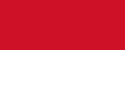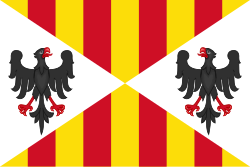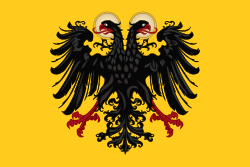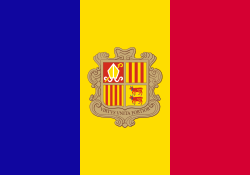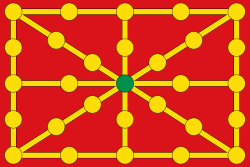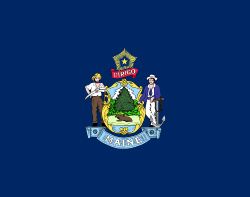1578
| 2. tisíciletí |
◄◄ ◄ 1574 • 1575 • 1576 • 1577 • 1578 • 1579 • 1580 • 1581 • 1582 ► ►►
1578 (MDLXXVIII) byl rok, který dle juliánského kalendáře započal středou.
Podle židovského kalendáře došlo k přelomu let 5338 a 5339. Podle islámského kalendáře nastal dne 20. března rok 986.
Události
- 26. května – V Amsterdamu byla ukončena katolická nadvláda a otevřely se zde znovu bohoslužby pro veřejnost.
- 11. června – Sir Humphrey Gilbert získal patent od anglické koruny k založení kolonie v Severní Americe
- Červenec – Sir Martin Frobisher oslavil v Newfoundlandu první Díkuvzdání s původním americkým obyvatelstvem.
- 4. srpna – Bitva u Alcácer Quibir v Severní Africe: Maurové porazili portugalského krále Sebastiána, který byl toho dne zabit svým strýcem Jindřichem, který se stal novým portugalským králem.
- 20. srpna - 6. září – Sir Francis Drake proplul se svou lodí Magalhãesovým průlivem. Loď byla poté pojmenována Golden Hind.
- 1. října – Alessandro Farnese vystřídal svého strýce Juana de Austria a stal se novým nizozemským místodržitelem.
- 21. října – Bitva u Wendenu: Rusko porazilo Švédsko a obsadilo město Polock.
Probíhající události
- 1558–1583 – Livonská válka
- 1562–1598 – Hugenotské války
- 1568–1648 – Osmdesátiletá válka
- 1568–1648 – Nizozemská revoluce
Narození
Česko
- 6. listopadu – Maxmilián z Lichtenštejna, moravsko-rakouský šlechtic († 29. dubna 1643)
- ? – Sezima z Vrtby, šlechtic, královský hofmistr a zakladatel hraběcí linie Vrtbů († 6. března 1648)
Svět

- 7. ledna – Anežka ze Solms-Laubachu, hesensko-kasselská lankraběnka († 23. listopadu 1602)
- 18. března – pokřtěn Adam Elsheimer, německý malíř († 11. prosince 1610)
- 1. dubna – William Harvey, anglický lékař, anatom a fyziolog, objevitel krevního oběhu († 3. června 1657)
- 14. dubna – Filip III. Španělský, španělský král († 31. března 1621)
- 2. července – Jean Guiton, francouzský hugenotský politik, obchodník a námořní velitel († 15. března 1654)
- 9. července – císař Ferdinand II. († 15. února 1637)
- 31. července – Kateřina Belgica Nasavská, hraběnka z Hanau-Münzenberg († 12. dubna 1648)
- 5. srpna – Charles d'Albert, vévoda de Luynes, francouzský politik, oblíbenec krále Ludvíka XIII. († 15. prosince 1621)
- 8. srpna – Matteo Rosselli, italský barokní malíř († 18. ledna 1650)
- 25. srpna – Henri II. de Rohan, francouzský vojevůdce, přední vůdce hugenotů († 13. dubna 1638)
- 1. října – Svatý Fidel ze Sigmaringy, německý katolický kněz a mučedník († 24. dubna 1622)
- 4. listopadu – Wolfgang Vilém Neuburský, německý šlechtic († 20. března 1653)
- 21. listopadu – Francesco Ingoli, italský kněz, církevní právník a astronom († 24. dubna 1649)
- 7. prosince – Giovanni Battista Caracciolo, italský malíř († 1635)
- ? – Hieronymus Francken II., vlámský malíř († 1623)
Úmrtí
Česko
- 6. února – Jan XVIII. Mezoun z Telče, olomoucký biskup (* asi 1542)
- 6. března – Zbyněk Berka z Dubé, český šlechtic a velkopřevor (* před rokem 1518)
- 9. listopadu – Mořic Šlik, šlechtic (* ?)

Svět
- 5. ledna – Giulio Clovio, italský malíř miniatur a iluminátor rukopisů (* 1498)
- 12. ledna – Kateřina Habsburská, portugalská královna (* 14. ledna 1507)
- 21. ledna – Pijali Paša, osmanský vezír a admirál (* cca 1515)
- 25. ledna – Mihrimah Sultan, jediná dcera osmanského sultána Sulejmana I. (* 21. března 1522)
- 3. března – Sebastiano Venier, vojevůdce a dóže benátský (* okolo 1496)
- 9. března – Václav Habsburský, rakouský arcivévoda (* 9. března 1561)
- 11. dubna – Johana Habsburská, toskánská vévodkyně, dcera císaře Ferdinanda I. (* 24. ledna 1547)
- 14. dubna – James Hepburn, skotský protestantský šlechtic (* cca 1534)
- 19. května – Kenšin Uesugi, japonský vládce (* 18. února 1530)
- 4. června – Charles de Berlaymont, nizozemský politik (* 1510)
- 8. června – Jacques de Lévis, hrabě de Caylus, jeden z tzv. mignons krále Jindřicha III. Francouzského (* 1554)
- 2. července – Thomas Doughty, anglický šlechtic, voják, učenec (* 1545)
- 4. srpna – Sebastián I. Portugalský, portugalský král (* 20. ledna 1554)
- 11. srpna – Pedro Nunes, portugalský matematik a kosmograf (* 1502)
- 10. září – Pierre Lescot, francouzský architekt (* 1515)
- 22. září – Václav Habsburský, syn císaře Maxmiliána II. (* 9. března 1561)
- 1. října – Juan de Austria, levoboček císaře Karla V., guvernér Španělského Nizozemí (* 24. února 1547)
- 18. listopadu – Ferdinand Habsburský, syn Filipa II. Španělského (* 4. prosince 1571)
- neznámé datum
Hlavy států
Střední Evropa
 České království – Rudolf II. (1576–1611)
České království – Rudolf II. (1576–1611) Polsko-litevská unie – Štěpán Báthory (1576–1586)
Polsko-litevská unie – Štěpán Báthory (1576–1586) Pruské vévodství – Albrecht Fridrich Pruský (1568–1618)
Pruské vévodství – Albrecht Fridrich Pruský (1568–1618) Uherské království – Rudolf II. (1576–1611)
Uherské království – Rudolf II. (1576–1611)
Balkán
 Černohorské knížecí biskupství – Pahomije II (1569–1579) a Gerasim (1575–1582)
Černohorské knížecí biskupství – Pahomije II (1569–1579) a Gerasim (1575–1582) Chorvatské království – Rudolf II. (1576–1611)
Chorvatské království – Rudolf II. (1576–1611) Republika Dubrovník – Božo Prucolo (1577–1578), Jako Antuna Benesse (1578–1579)
Republika Dubrovník – Božo Prucolo (1577–1578), Jako Antuna Benesse (1578–1579)
Britské ostrovy
 Anglické království – Alžběta I. (1558–1603)
Anglické království – Alžběta I. (1558–1603) Irské království – Alžběta I. (1558–1603)
Irské království – Alžběta I. (1558–1603) Skotské království – Jakub I. Stuart (1567–1625)
Skotské království – Jakub I. Stuart (1567–1625)
Francie
 Anjou – Jindřich III. Francouzský (1574–1589)
Anjou – Jindřich III. Francouzský (1574–1589) Auvergne – Kateřina Medicejská (1524–1589)
Auvergne – Kateřina Medicejská (1524–1589) Francouzské království – Jindřich III. Francouzský (1574–1589)
Francouzské království – Jindřich III. Francouzský (1574–1589) Maine – Karel II. Lotrinský (1573–1611)
Maine – Karel II. Lotrinský (1573–1611) Monako – Honoré I. (1523–1581)
Monako – Honoré I. (1523–1581) Nevers – Henrietta Klévská (1564–1601)
Nevers – Henrietta Klévská (1564–1601)
Itálie
 Benátská republika – Nicolò da Ponte (1578–1585)
Benátská republika – Nicolò da Ponte (1578–1585) Maltští rytíři – Mathurin Romegas (1577–1581)
Maltští rytíři – Mathurin Romegas (1577–1581) Mantovské vévodství – Vilém I. Gonzaga (1550–1587)
Mantovské vévodství – Vilém I. Gonzaga (1550–1587) Modenské vévodství – Alfons II. d'Este (1559–1597)
Modenské vévodství – Alfons II. d'Este (1559–1597) Neapolské království – Filip II. Španělský (1554–1598)
Neapolské království – Filip II. Španělský (1554–1598) Papež – Řehoř XIII. (1572–1585)
Papež – Řehoř XIII. (1572–1585) Parmské vévodství – Ottavio Farnese (1556–1586)
Parmské vévodství – Ottavio Farnese (1556–1586) San Marino – Ippolito Gombertini, Francesco Giannini, Liberio Gabrielli, Ascanio Belluzzi
San Marino – Ippolito Gombertini, Francesco Giannini, Liberio Gabrielli, Ascanio Belluzzi Sicilské království – Filip II. Španělský (1554–1598)
Sicilské království – Filip II. Španělský (1554–1598) Svatá říše římská – Rudolf II. (1576–1611)
Svatá říše římská – Rudolf II. (1576–1611) Toskánské velkovévodství – František I. Medicejský (1574–1587)
Toskánské velkovévodství – František I. Medicejský (1574–1587)
Pyrenejský poloostrov
 Andorra – Jindřich IV. Francouzský (1572–1610) a Miquel Jeroni Morell (1578–1579)
Andorra – Jindřich IV. Francouzský (1572–1610) a Miquel Jeroni Morell (1578–1579) Navarrské království – Jindřich IV. Francouzský (1572–1610)
Navarrské království – Jindřich IV. Francouzský (1572–1610) Portugalské království – Sebastián I. (1557–1578); Jindřich I. (1578–1580)
Portugalské království – Sebastián I. (1557–1578); Jindřich I. (1578–1580) Španělské království – Filip II. Španělský (1556–1598)
Španělské království – Filip II. Španělský (1556–1598)
Skandinávie
 Dánsko-Norsko – Frederik II. Dánský (1559–1588)
Dánsko-Norsko – Frederik II. Dánský (1559–1588) Šlesvicko – Frederik II. Dánský (1559–1588)
Šlesvicko – Frederik II. Dánský (1559–1588) Švédsko – Jan III. Švédský (1568–1592)
Švédsko – Jan III. Švédský (1568–1592)
Východní Evropa
 Krymský chanát – Mehmed II. Giray (1577–1584)
Krymský chanát – Mehmed II. Giray (1577–1584) Moldavsko – Ivan Pidkov (1577–1578)
Moldavsko – Ivan Pidkov (1577–1578) Ruské carství – Ivan IV. Hrozný (1547–1584)
Ruské carství – Ivan IV. Hrozný (1547–1584) Sedmihradské knížectví – Štěpán Báthory (1576–1586)
Sedmihradské knížectví – Štěpán Báthory (1576–1586) Valašské knížectví – Kateřina Salvaresso (1577–1583)
Valašské knížectví – Kateřina Salvaresso (1577–1583)
Blízký Východ, Eurasie a Asie
 Osmanská říše – Murad III. (1574–1595); velkovezír Sokollu Mehmed Paša (1565–1579)
Osmanská říše – Murad III. (1574–1595); velkovezír Sokollu Mehmed Paša (1565–1579)- Perská říše – Muhammad Chodábende (1578–1587)
Externí odkazy
 Obrázky, zvuky či videa k tématu 1578 na Wikimedia Commons
Obrázky, zvuky či videa k tématu 1578 na Wikimedia Commons
Média použitá na této stránce
Banner of Kingdom of Poland in the 14th century
A seal of Duke Premislaus II from 1290 shows the ruler holding a banner emblazoned with a crowned eagle. During the reign of King Ladislaus (r. 1320–1333), the red cloth with the White Eagle was established as the royal banner. The orientation of the eagle on the banner varied; its head could point either upwards or towards the hoist.
Flag of Hungary from 6 November 1915 to 29 November 1918 and from August 1919 until mid/late 1946.
Autor: Sodacan, Licence: CC BY-SA 3.0
Královská standarda francouzského krále (používaný jako státní vlajka Francouzským královstvím v období absolutní monarchie). Používaná byla v letech 1638 až 1790.
Autor: Tento vektorový obrázek byl vytvořen programem Inkscape ., Licence: CC BY-SA 4.0
Official flag of the Republic of Venice used by the Doge Domenico Contarini.
Vatican flag before1808
Při zobrazení tohoto souboru lze snadno přidat orámování
Autor: David Liuzzo, eagle by N3MO, Licence: CC BY-SA 3.0
Banner of the Holy Roman Empire, double headed eagle with halos (1400-1806)
Autor: Miguillen, Licence: CC BY-SA 4.0
Bandera de Navarra (versión antigua)
Flag of Portugal, created by Columbano Bordalo Pinheiro (1857-1929), officially adopted by Portuguese government in June 30th 1911 (in use since about November 1910).
Autor: Tento vektorový obrázek byl vytvořen programem Inkscape ., Licence: CC BY-SA 3.0
Royal Standard of Denmark, used from 1731 to 1819.
Autor: Osipov Georgiy Nokka, Licence: CC BY-SA 3.0
Flag of the Tsardom of Russia (1693–1721)
Autor: Dahn, Licence: CC BY 4.0
Banner of Gabriel Bethlen, Prince of Transylvania, in 1615. Features Bethlen's arms alongside Transylvania's, within a red field with "tongues of fire". Based on several reconstructions, including that provided by the Hungarian Canadian Cultural Center, MaghiaRomânia, and Parókia Portál.
The Ottoman flag and Turkey Republic Flag of 1844–1935. Late Ottoman flag which was made based on the historical documents listed in the Source section. Note that a five-pointed star was rarely used in the crescent-and-star symbol before the 19th century.
Based on similar examples by the European painters in various collections, this work is one of the portraits of Mihrimah Sultan, who was depicted rather often in the 16th century.
Dressed in a plain brown gown with floral motifs, the figure wears a tall headdress ornate with expensive stones. She is set against a dark background upon which are the following inscriptions on the upper left and upper right corners, respectively: “Cameria Solimani Imparator Filia” (Cameria, Daughter of Sultan Süleyman) and “Rostanis Bassae Vxor 1541” (Wife of Rüstem Pasha, 1541). It is highly probable that the date inscribed here does not indicate the date on which the work was executed. It can be assumed that the date and the inscription found on virtually all of the similar portraits by different artists repeat a tradition initiated by the first original portrait.
Apart from similar three-quarter view portraits found at the Courtauld Institute (Inv. No. 331) in London, The National Trust in Lacock Wiltshire (Inv. No. 996348) and the Mazovian Museum in Poland, the work also has comparable examples in bust portraits at the Uffizi Gallery in Florence (Inv. No. 1890/13), the Topkapı Palace Museum in Turkey (Inv. No. TSM, 17/141), as well as in the collection of Rahmi Koç.
It is believed that the origin of the portrait is to be found in the collection of 16th century Italian humanist and intellectualist Bishop Paolo Giovio (1483-1552). Giovio displayed his collection of portraits of notables in Rome until 1543, as of which the date he transferred it to Musaeum, the home he built in Como. An inventory made after the 1569 flood that destroyed almost the entire collection speaks of a “Turkish Hall” (Sala de’ Turchi). In his records from 1568, Vasari mentions having seen portraits of Hürrem and Mihrimah Sultans by Titian in this collection. Furthermore, it is known that Italian painter Cristofano dell’ Altissimo copied the paintings in this collection for Cosimo I de’ Medici. Included among these works currently on display at the Uffizi Gallery, the portrait of Mihrimah Sultan has been identified in the records of 1557 in Florence. Based on this information, it is presumed that the portrait can be dated to somewhere between 1552 and 1557, around the time of Giovio’s death.
As the daughter of Sultan Süleyman the Magnificent (1494-1566) and Hürrem Sultan (d. 1558), Mihrimah Sultan (1522-1578) was married to the Governor of Diyarbakır Rüstem Pasha in 1539. She had two children, Ayşe Hümaşah and Osman with Rüstem Pasha, who served as grand vizier in 1544-1553 and 1555-1561. A rather influential figure at the Harem during the reigns of her father Sultan Süleyman the Magnificent and her brother Sultan Selim II, Mihrimah Sultan commissioned Mimar Sinan to build a mosque and complex in her name both in Üsküdar and Edirnekapı.
The attire and headdress repeated in other examples of the portrait reflect the Turkish fashion of the period. During the 16th century, in which the Ottoman style became visible in Europe, both Mihrimah Sultan and her mother Hürrem Sultan represented the idealized Ottoman figure. In this respect, the portrait inspired other painters to recreate the popular theme of a given period.Při zobrazení tohoto souboru lze snadno přidat orámování
Při zobrazení tohoto souboru lze snadno přidat orámování
Flag of Ducal Prussia
"Il ritratto dell'imperatore Ferdinando II d'Asburgo fa pendant con quello della consorte Eleonora Gonzaga (inv. Pal., 203) sposata nel 1622. La coppia di ritratti fu probabilmente eseguita a Vienna dal Suttermans attorno al 1623 ed inviata a Firenze in segno di ringraziamento verso la granduchessa reggente Maria Maddalena d'Austria per avere accettato che il pittore si recasse presso la corte austriaca per realizzare i ritratti ufficiali a figura intera dei due regnanti" [1]
Flag of Wallachia (cca. 1593 - 1611). This model was composed by Romanian heraldist Dan Cernovodeanu, after two (almost) identical contemporary descriptions of the flag of en:Michael the Brave (1593 - 1601) and en:Radu Şerban (1602 - 1611):
The flag is from white damascus on which is depicted a raven [sic!] with a red double cross and a red star in his berk, standing over a green juniper. (Ciro Spontoni, Historia della Transilvania, Venice, 1638)
The bird is a combination between aquila and raven, as it appears on contemporary seals.Autor: R-41, Licence: CC BY-SA 4.0
Flag of Dalmatia used by Italian irredentists.
Flag of Modena
Flagge Schleswig
Autor: Spesh531, Licence: CC BY-SA 3.0
Flag of the Prince-Bishopric of Montenegro
Autor: Berto456, Licence: CC BY-SA 4.0
Representation of the variant of the flag of St. Blaise which was used as the State Flag and State Ensign of the Ragusan Republic, in the colors used during the Republic.
Autor: Rannpháirtí anaithnid, Licence: CC BY-SA 3.0
Arms of Ireland depicted as a banner and in a manner like during the Kingdom of Ireland period. Based on File:Arms of Ireland (Historical).svg





